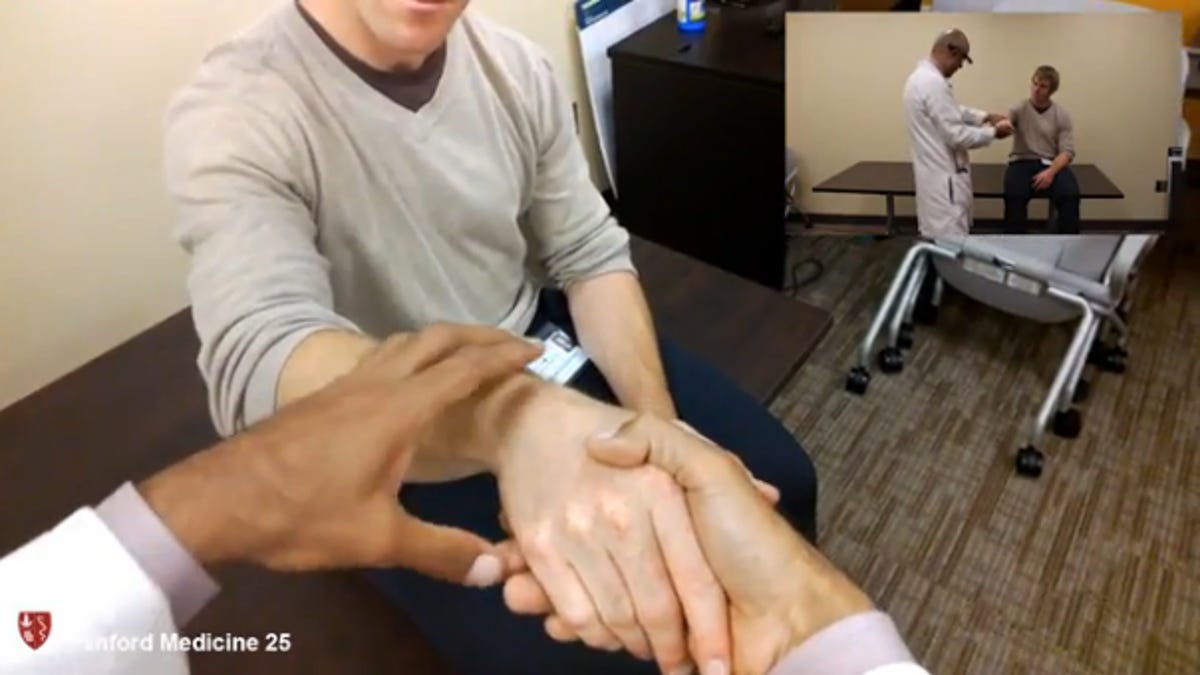Doctor taps Glass to teach exam techniques, bedside manner
Physician experiments with Google Glass to add his (literal) point of view to the Stanford Medicine 25 initiative, which includes a series of hands-on workshops and videos to teach 25 patient-exam techniques.

Not all doctors' bedside manners are created equal, and while it's an area of medicine that perhaps cannot be taught, seeing the way an experienced physician examines his patient, through the physician's own eyes, might be as good as it's gonna get for med students.
So thinks Dr. Abraham Verghese, a Stanford doc who was recently experimenting with Google Glass in his Stanford Medicine 25 initiative, which includes a series of hands-on workshops and videos to teach 25 patient-exam techniques.
In the video below, Verghese wears the glasses while explaining how he likes to initially approach his patients with a handshake that segues seamlessly into taking their pulse via the wrist. The instructional video shows two simultaneous perspectives -- one from a camera a few feet from the doctor and the patient, and another (slightly shakier) perspective from the specs.
While there's nothing particularly groundbreaking about what Verghese is attempting here -- shoot, a helmet cam would probably suffice -- it's the first step toward integrating the glasses into the exam room, privacy issues aside. And one imagines that as a teaching tool, the specs could work great across many applications, including in surgery.
Stanford colleague Errol Ozdalga, who applied for Google Glass and is orchestrating the endeavor, recently said in a school news report: "We are also working on doing a live session with Dr. Verghese visiting a patient in the hospital while a classroom of residents and students are connected via video chat. It would be like a classroom of learners surrounding the patient without leaving the room. The most valuable teaching in medicine happens when patients are involved. We may be able to use Google Glass to bring the patient into the classroom without leaving his or her bed!"
Another Stanford prof, John Kugler, who actually plays the role of the patient in this video, plans to use Google Glass in a film teaching bedside ultrasound techniques.
"I personally think that the effect Google Glass has in patient care is going to take time to develop," Ozdalga added, "but it will eventually play a great role as technology is more accepted and the devices become more discreet."

